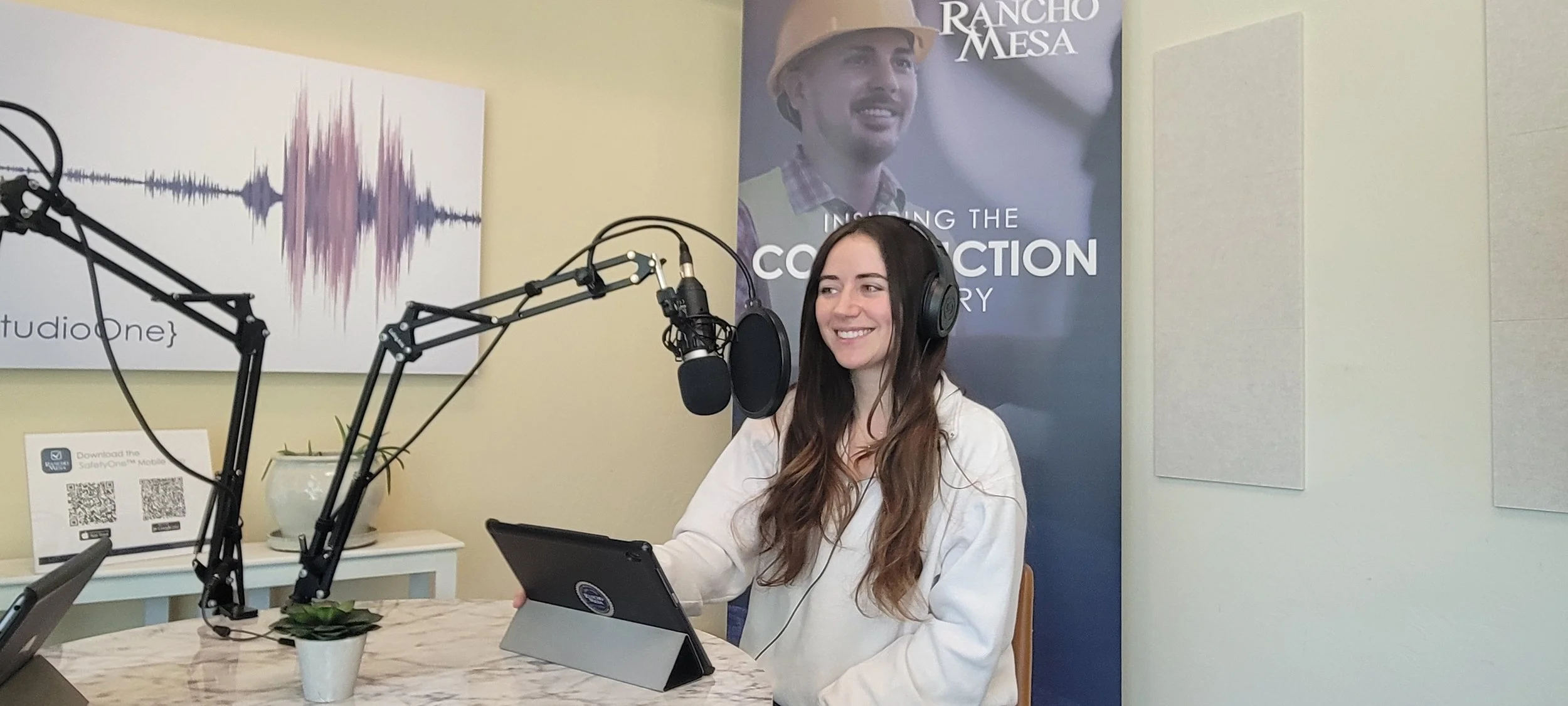Ep. 268 Cal/OSHA Adopts New COVID-19 Non-Emergency Regulations
Rancho Mesa's Alyssa Burley and Media Communications & Client Services Specialist Lauren Stumpf discuss the new COVID-19 Prevention Non-Emergency Regulations.
Show Notes: Subscribe to Rancho Mesa's Newsletter
www.dir.ca.gov/dosh/coronavirus/Non_Emergency_Regulations/
Rancho Mesa's COVID-19 Prevention Program Template
Director/Host: Alyssa Burley
Guest: Lauren Stumpf
Producer/Editor: Megan Lockhart
Music: "Home" by JHS Pedals, “News Room News” by Spence
© Copyright 2022. Rancho Mesa Insurance Services, Inc. All rights reserved.
transcript
[Introduction Music]
Alyssa Burley: Hi! This is Alyssa Burley with Rancho Mesa’s Media Communications and Client Services Department. Thank you for listening to today’s top Rancho Mesa news brought to you by our safety and risk management network, StudioOne™. Welcome back, everyone. My guest is Lauren Stumpf, Media Communications and Client Services Specialist with Rancho Mesa. Today we’re going to discuss the new COVID-19 Prevention Non-Emergency Regulations. Lauren, welcome to the show.
Lauren Stumpf: Hi Alyssa, thank you for having me back.
AB: In a previous episode, number 254, we discussed the new proposed California COVID-19 standards that are liking going into effect, if approved by Cal/OSHA, at the beginning of the new year. Since then, those standards have been voted on. Lauren can you tell our listeners about the outcome of the Cal/OSHA voting?
LS: Of course. So, on Thursday, December 15th, 2022 the standards were voted on during the Occupational Safety and Health Standards Board meeting. These regulations were passed and adopted. So this means, they will take effect once they are approved by the Office of Administrative Law in the month of January 2023 and will remain in effect for two years after the effective date, except for the recordkeeping subsections that will remain in effect for three years. And I’d like to mention that previously the proposed standards had the word “permanent” in the title despite it having this 2-3 year expiration date. The title has since been changed to “COVID-19 Prevention Non-Emergency Regulations” just to try to avoid any confusion.
AB: Okay, so what are some things that employers need to be aware of with the new COVID-19 Prevention Non-Emergency Regulations?
LS: These new regulations include some of the same requirements found in the current COVID-19 Prevention Emergency Temporary Standards (or ETS), but there are some new provisions. First I’ll begin with pointing out some key requirements that are staying the same. So with the new regulations, employers will still need to make COVID-19 testing available at no cost to the employee and during paid time to employees after a close contact. Employers will still need to have and provide their employees with face coverings and respirators upon request. Employers must still report information about employee deaths, serious injuries, and serious occupational illnesses to Cal/OSHA.
Some new changes include:
Employers are no longer required to maintain a standalone COVID-19 Prevention Plan, as long as COVID-19 requirements are addressed within a section of their Injury and Illness Prevention Program, or known as IIPP.
Employers must now report major outbreaks to Cal/OSHA.
Exclusion Pay for employees has also been removed from the new regulations. So this means, employers will no longer be required to pay employees while they are excluded from work due to COVID-19. Instead the employer would only need to provide employees with information on the benefits they would be entitled to under state, federal, and local laws.
There are also some definition changes to what is considered “Close Contact” and “Exposed Group.” “Close contact” is now defined by looking at the size of the workplace in which the exposure takes place. So, for indoor airspaces of 400,000 or fewer cubic feet, “close contact” is now defined as sharing the same indoor airspace with a COVID-19 case for a cumulative total of 15 minutes or more over a 24-hour period during the COVID-19 case’s infectious period. For indoor airspaces of greater than 400,000 cubic feet, “close contact” is defined as being within six feet of a COVID-19 case for a cumulative total of 15 minutes or more over a 24-hour period during the COVID-19 case’s infectious period. The term “Exposed group” was clarified to include employer-provided transportation and employees residing within employer-provided housing that are covered by the COVID-19 Prevention standards.
For more in depth details of the new regulations, and to help answer any questions, please visit the COVID-19 Prevention Non-Emergency Regulations webpage on the CA.gov website.
AB: Thank you for addressing some of these important requirements. We will include a link to CA.gov’s website that has more information, in the episode notes. Is there anything employers should do to prepare for these changes?
LS: Employers should review California Department of Public Health and Cal/OSHA guidance on requirements for things such as the use of face masks. Employers must also develop, implement, and maintain effective methods to prevent COVID-19 transmission by improving ventilation. So it’s important to review CDPH and Cal/OSHA Interim Guidance for Ventilation, Filtration, and Air Quality in Indoor Environments.
[Outro Music]
AB: And, Rancho Mesa will make available a sample COVID-19 Prevention Plan with the updated regulations, in January 2023. Lauren, thank you for joining me in StudioOne™.
LS: Thanks Alyssa!
AB: This is Alyssa Burley with Rancho Mesa. Thanks for tuning in to our latest episode produced by StudioOne™. For more information, visit us at ranchomesa.com and subscribe to our weekly newsletter.

